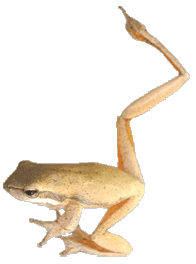What is the Cambrian Substrate Revolution?
 Michael Anissimov
Michael Anissimov
The Cambrian substrate revolution was a crucial evolutionary event which occurred at the dawn of the Cambrian period 542 million years ago. The revolution consisted of the first burrowers to burrow deep into the substrate, rather than grazing at the surface or just below the microbial mats which dominated the sea floor at the time. In fact, the beginning of the Cambrian is internationally defined by the first appearance of Trichophycus pedum, a ubiquitous trace fossil with a distinctive looping pattern. The burrower that made the trace fossil is unknown, but it may have been a slug or a primitive arthropod.
Before the Cambrian substrate revolution, the sea floor consisted of a microbial mat on top of a hard, layered, sulphidic, anoxic substrate. Animals lived on the mat, attached to it via holdfasts, grazed the surface of the mat, were embedded in it, or burrowed immediately below it. As the substrate beneath was almost completely anoxic (without oxygen), it was filled with sulfate-reducing bacteria, which emitted hydrogen sulfide, poisonous to most other organisms, which discouraged them from deep burrowing.

After billions of years of substrates dominated by sulfate-reducing bacteria, a few pioneering organisms began burrowing deeper into the substrate, making it more loose and oxygenated. This initiated a feedback cycle whereby the substrate became less hostile to animals, and animals took the initiative of burrowing in it more aggressively, consuming the bacteria and other animals that were colonizing the newly oxygenated environment. The ultimate result was the evolution of a wide range of burrowing organisms and the opening up of a new oceanic niche. The oxygenation of the top layer of substrate may have contributed to the Cambrian explosion, a massive event of evolutionary radiation that occurred soon after the Cambrian substrate revolution. Conversely, the Cambrian explosion may have other causes, and the Cambrian substrate revolution may have been a side effect of diversifying organisms.
There are three primary advantages to burrowing which would have accelerated the Cambrian substrate revolution once it got started: the available of food, anchorage (which prevented the animals from being washed away by currents), and avoiding predators. As predators tend to be larger and less maneuverable than small animals, few of them would have burrowed into the muddy substrate. The Cambrian substrate revolution was the beginning of the end for microbial mats, which are now found only in extreme environments inhospitable to burrowers, such as brine lakes and the deepest reaches of the ocean floor.
AS FEATURED ON:
AS FEATURED ON:











Discuss this Article
Post your comments